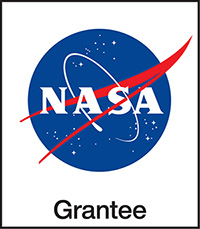Full Educator Guides
CONTEXT SETTING
ADVENTURES
CONTEXT SETTING
ADVENTURES
ACTIVITIES
How to Teach These Units
Explore all Space in Extreme Environments offerings, including background videos, downloads, learning pathways, and more!
7. Science Share-Out
Learners share what they learned about hazards and mitigation strategies for NASA missions.
Guiding Question
How can we mitigate hazards on a particular NASA mission?
Adventure Downloads
- 1
- 2
 Adventure Timing
Adventure Timing
5 MIN. Get Ready & Team Up
40 MIN. Science Share-Out
5 MIN. Reflect
55 MIN. TOTAL
Setup: Prep Time 40 min.
- Invite people to the presentations.
*See Materials & Preparation in the Educator Guide linked above for full info.
21st Century Skills
- Communication
Science Practices
- Engaging in Argument from Evidence
- Obtaining, Evaluating, and Communicating Information
Learners Will Do
- Present their mission plans.
Learners Will Know
- Scientists have valuable knowledge to share about the problem they have solved.
Connecting Across Adventures
- Adventure 6: Mitigate Hazards for Your Mission: Last time, learners chose a NASA mission and thought about the hazards, mitigation strategies, and other factors NASA should consider.
- Adventure 7: Science Share-Out: Today, learners share their proposed mission strategy with members of their community.
- Engineering Pathway: Next time, learners experience engineering related to this topic in the Space Hazards Engineering Pathway (optional).
Level Up! (Optional)
- Encourage learners to explore actual NASA missions to the places they have been considering. The Artemis Program is sending astronauts to the Moon and preparing NASA for a trip to Mars. The OSIRIS-REx mission collected samples from an asteroid and returned them to Earth in 2023.
- Encourage learners and their families to try out the PLANETS At Home activities and those at yes.mos.org/families, which include more challenges to do together. (5+ min.)
- Tell learners, if anyone asks them what they did today, they can tell them “We shared a plan to guard against the hazards on a space mission.”
- If your learners enjoyed this planetary science challenge, they would also enjoy the Rover Observation and Discoveries in Space (ROADS) student challenges. Show your learners the NASA National Student Challenges weblink. (15 min. to review weblink, 10–15 hours per challenge)

